I play too much
Dungelot. Way too much. And with a sequel on the way, I'm worried that my life may well become just one long dungeon run.
Fortunately, there's an upside to my
Dungelot addiction.
I can now impart my
Dungelot wisdom to you fine
Pocket Gamer readers. So that you can break the 70th floor and feel like a
Dungelot god an' all that.
When should you use items? Which class should you choose? When should you spend your cash, and on which upgrades? How the heck do I stop playing this game? Arghhh, it's eating my life away.
Anyway, this guide should answer all these questions... well, except the last one. You're on your own with that one, pal.
Making space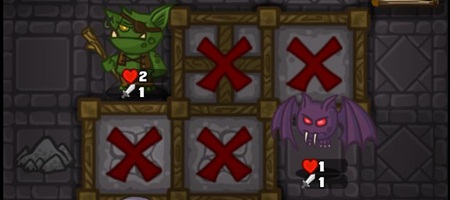
On each
Dungelot floor, your first objective should be to open up as many spaces as possible before attacking an enemy.
By doing this, you can potentially use spells and the like to harm or affect multiple enemies in one go, rather than tackling enemies one at a time. It's the difference between doing okay and executing a solid run.
Start each floor by moving towards the closest border block, then make your way in each direction, clockwise and anticlockwise, until you've hit enemies both ways.
If you still have free bricks to smash elsewhere, repeat this process (move towards borders, go in both directions) until you can't do anything other than attack enemies.
Here's the reasoning behind this: when you find an enemy behind a border block, that bad guy can only potentially lock up four surrounding blocks. By comparison, if you find an enemy in a centre block, it could lock up to a total of seven blocks.
On the attack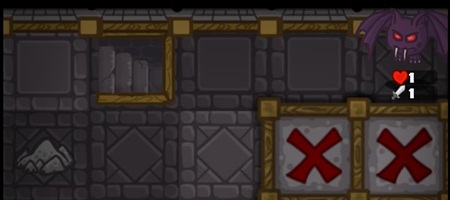
Now, you need to choose whom to attack, and in what order. Your aim, essentially, is to keep wiping out enemies until you find the exit key, then assess whether it's worth killing some more or moving on to the next floor.
Here's how I do it: I first check which enemies have a crown next to them. These enemies are providing boosted attack points to everyone else, so if you kill them, the boosts will disappear.
Clearly, it's important to get rid of these guys early on, so check which will be the easiest kill (lowest health / attack combo) and lay into them.
Then, it's a case of balancing enemy health and attack power vs positioning. You're looking to kill the weediest enemies first, you see, while also aiming to open up more of the dungeon to explore.
Once you have the key, ask yourself this: is it really worth losing health to kill the rest of these enemies? Is the bonus I will gain from clearing the floor worth it? If not, bail.
Where's the beef?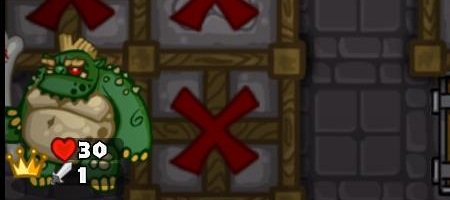
Every now and again, you'll be given the opportunity to gain huge advantages. These can make the difference between a good run and a great run.
For example, you may come across what I like to call 'beef enemies'. These are foes who have an unexpectedly huge amount of energy and have a little gold crown next to their energy. Ogre Kings, for example, are 'the beef'.
Do not ignore these enemies, for they hold very special rewards if you beat them. These rewards range from exposing the location of the key on each floor, to revealing where the treasures and the traps are. Kill every single beef enemy you find - it's always worth the energy you'll lose.
Side-quests also help you boost your stats. When the game asks you to find a special altar or locate three lost maidens, make sure you do it. The reward is usually greater than the risk.
A touch of class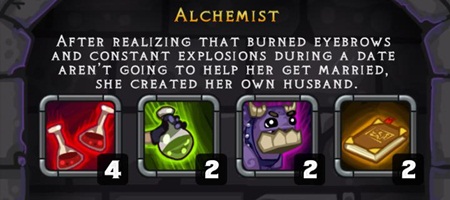
Character classes, eh. Which one shall I choose? Why, all of them, of course.
I feel compelled to tackle the subject of classes in this guide, though, in all honesty, no class is actually any 'better' than any of the others. They each offer different experiences, giving the game that little bit more replayability (as if it needed it).
With the Paladin, for example, you'll want to tackle the undead more often, given that he has extra attack power vs skeletons, etc.
The Brewer, meanwhile, is great for converting spells to health, since he gets a tiny bit more. Plus, he gets the chance to gain more attack power.
When you finally unlock the Alchemist, however, it can be difficult to go back. She may not look that special, but in play she's pretty amazing. That's mainly due to the Robosaur pet she can place down. Rather brilliantly, this pet can take damage for you (you'll want to upgrade that A.S.A.P., too).
Itemized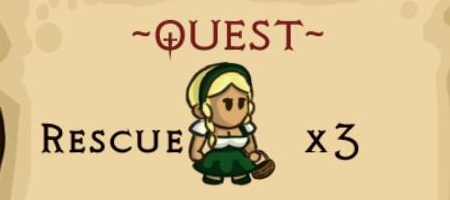
The items you collect are split up into two categories: spells and equipment. Knowing when to use spells and which equipment to keep is the key to staying alive for as long as possible.
It's a good idea to store certain items up to begin with, as using them to kill off enemies with tiny amounts of energy isn't really worth it. You might as well save them for when you really need them.
Note, too, that the power attached to each item scales with the game as you delve deeper into the dungeon. For example, a poison attack may only do 3 damage in total when you first pick it up. A few floors later, mind, and it may well be offering up 9 damage.
Certain spells are pretty pointless at first and then become incredibly useful later on, so you'll want to stack those. Later in the game, for instance, you can use the spell for throwing enemies to a different random space to pull the axe-throwing enemies to you.
This means you can simply make a space next to the entrance gate, use the spell on the axe-thrower, and watch your enemy get warped directly next to the entrance gate, ready for a pounding.
Lightning is another good one to store up for later, since it removes half of an enemy's energy. Suddenly, one of those later enemies with 100+ HP looks far more manageable.
And don't forget you can sell items for money / health for those desperate situations.
Equip this
As for equipment, it's all about making sure you have the best deal available at all times.
When your four slots are full and you find a new treasure chest, assess whether it's worth selling some equipment off for the new unknown kit. NB: It probably
is worth it.
If you're unsure about which equipment is worth getting rid of, select to sell each one by one but don't go through with it. The game will reveal how much each is worth in coins, which will give you a good indication of their respective values.
Sell off the cheapest one and pick up the new equipment. If it turns out it wasn't a great swap, don't worry: you'll no doubt find some new equipment soon for which you can swap this one out.
And when you're about to lose the game, with your HP about to hit zero, don't forget to sell all your gear. When you die, you just lose it all and don't get it back or gain its worth, so you might as well get the most out of it with your final breath.
Cash it in
One big question that most
Dungelot players will be asking is: how do I best manage my cash?
It's easy to jump into a game, spend all your savings on boosted stats at the various shops you find, and then come away from the run with less money than you started with. This, clearly, is not cool.
My tip is to buy a single attack boost for every ten floors you clear. The extra attack point costs 300 coins, and you'll easily make that up in ten floors.
And when it comes to spending the cash, I'd opt to save up and go for the fourth upgrade (the health boost) for each character. It makes a huge difference, and can help you to complete an extra dozen floors before meeting your demise.
As for the other character upgrades, use your best judgement. The Paladin's Holy Strike upgrade, for example, is rather useful in the early stages, while the Vampire's Bat Rush is also an excellent choice for maxing out.









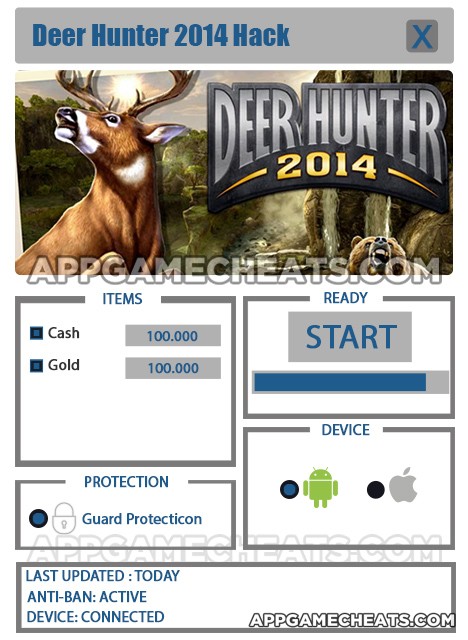



 Bubble Witch Saga 2 Cheats, Tips & Hack for Gold Bars and Lives - AppGameCheats.com
Bubble Witch Saga 2 Cheats, Tips & Hack for Gold Bars and Lives - AppGameCheats.com StormBorn: War of Legends guide - Tips and tricks to help you win every battle
StormBorn: War of Legends guide - Tips and tricks to help you win every battle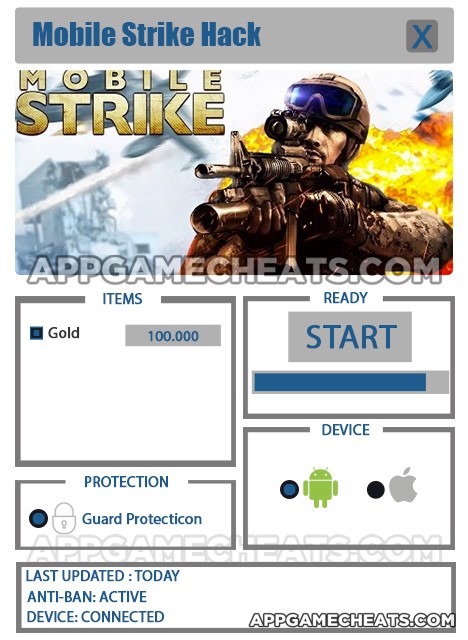 Mobile Strike Cheats & Hack for Free Gold 2016
Mobile Strike Cheats & Hack for Free Gold 2016 Word Academy Lösung aller Level Packs
Word Academy Lösung aller Level Packs 100 Pics Icons Answers Levels 1-100
100 Pics Icons Answers Levels 1-100